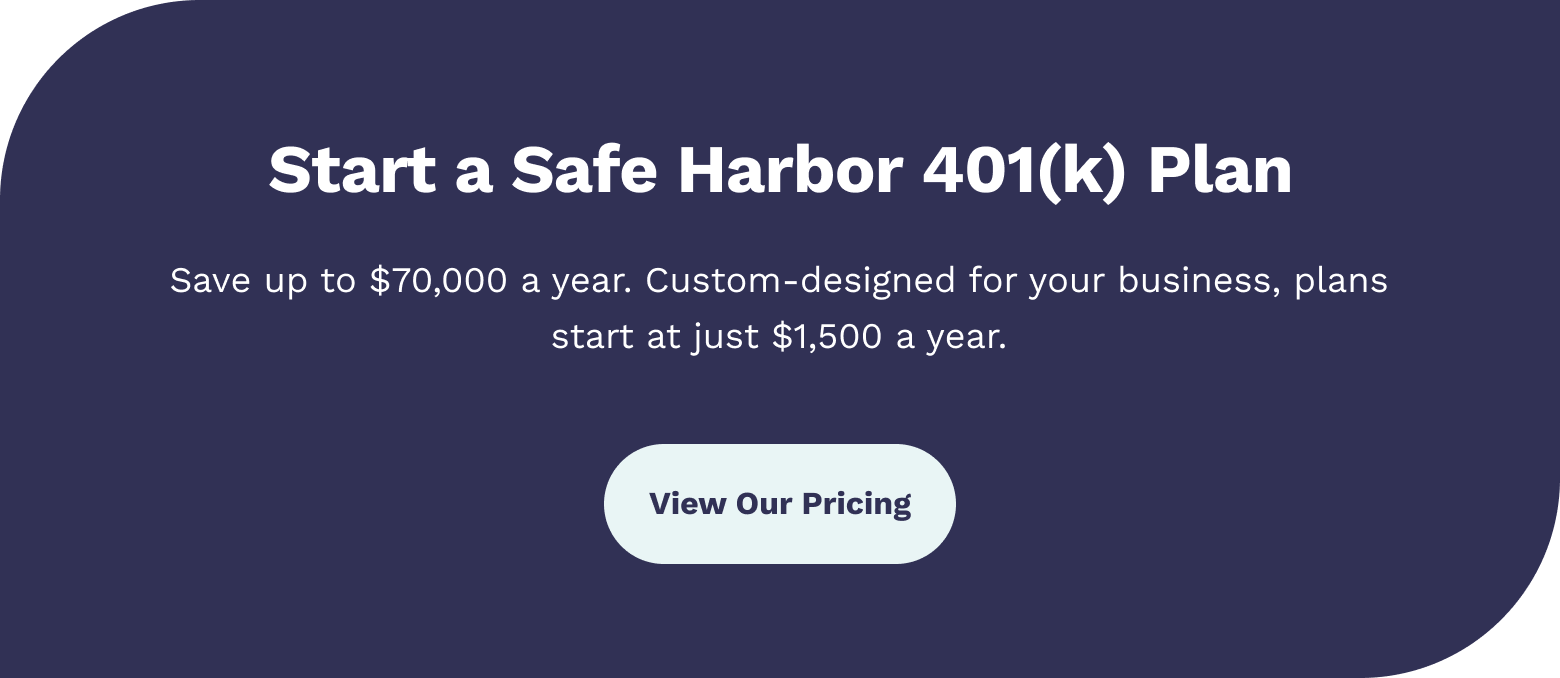The Department of Labor's (DOL's) current regulations on selecting a 401(k) investment menu are titled, “Prudence and Loyalty in Selecting Plan Investments and Exercising Shareholder Rights.” However, many have labeled it the “ESG rule” because it allows 401(k) fiduciaries to consider ESG (Environmental, Social, and Governance) factors when selecting plan investments. The “ESG” label is misleading because the regulations specifically state that plan investment decisions cannot result in reduced returns or greater risks in favor of the ESG factors.
ESG investing has become a political battlefield in recent years – some want to promote it, while others want to prevent it. We're concerned the ESG label may distract from the significance of the current DOL regulations. They clarify what’s truly important for 401(k) fiduciaries when selecting 401(k) investments: evaluating risk-return factors, including investment fees. They treat ESG factors as a minor or collateral consideration.
If you can get past the ESG label, the current DOL regulations can help you focus on what’s important in selecting a 401(k) investment menu. Here’s what you need to know about the regulations and your fiduciary responsibilities when selecting 401(k) plan investments.
ESG Background
Environmental, social, and governance (ESG) factors are used to screen investments based on corporate policies and to encourage corporations to act responsibly. For example, only investing in companies that are reducing their carbon footprint or not investing in companies doing business with Russia.
The potential use of ESG factors in selecting 401(k) investment options has been around for decades. However, ESG factors have become a rallying cry in today’s political climate. From legislation intending to nullify DOL regulations to lawsuits claiming the regulations impermissibly promote ESG factors to shareholder activism advocating for more ESG influence. ESG factors, whether attempting to promote or prevent them, are diverting attention away from the clarity provided in the current DOL regulations in selecting plan investments: focus on the risk-return analysis.
DOL Focuses on Risk-Return, Not ESG
According to the current DOL regulations, selection of 401(k) investment options must be based on factors that are reasonably determined to be relevant to a risk-return analysis. The regulations also include the following two principles:
-
- A fiduciary cannot consider objectives unrelated to providing benefits under the plan, such as ESG factors, in selecting an investment menu.
- Although a fiduciary is not prohibited from selecting an investment based on collateral benefits (i.e., benefits other than investment returns, such as ESG factors), he or she cannot accept reduced returns or greater risks to secure collateral benefits.
It is unclear how either side, fighting for promotion or prevention, can interpret these regulations to prioritize ESG factors. The DOL wants you to focus on what is most important in meeting your investment-related fiduciary responsibilities: evaluating risk-return factors and not subordinating the interests of employees by sacrificing investment returns or taking on additional investment risk.
Meeting Fiduciary Responsibilities for 401(k) Investments
The Employee Retirement Income Security Act of 1974 (ERISA) is a federal law that sets minimum standards for 401(k) plans. Believe it or not, it imposes few fiduciary responsibilities when selecting investments for a 401(k) plan. They boil down to picking – and maintaining - enough “prudent” investments to allow plan participants to diversify their account “so as to minimize the risk of large losses.”
You can satisfy your investment-related fiduciary responsibilities by following three clear and simple steps:
-
- Understand your diversification duty
- Select “prudent” investment funds
- Monitor your investments periodically
Understanding your Diversification Duty
ERISA 404(c) states you must offer a diversified range of investment alternatives with differing potential for investment risk and return. Only three investment alternatives are required to meet the requirements, and it is satisfied by offering funds that cover equity (stocks), fixed income (bonds), and capital preservation asset classes.
In building an investment menu with different risk and return characteristics, the DOL regulations allow you to take employees' non-financial preferences into account, which opens the door for an ESG fund(s).
Selecting Prudent Investment Funds
You must select “prudent” investment funds when constructing a 401(k) investment menu. ERISA doesn’t define “prudent”, but we consider a fund to be prudent if it meets its investment objective for a reasonable fee.
Index funds – which are designed to track a market benchmark (e.g., the S&P 500 index) make prudent fund selection easy. This is true because comparable index funds (i.e., funds with the same market benchmark) from any of the largest providers – including Vanguard, Blackrock, Schwab, and Fidelity – offer similar returns and low fees.
That’s in sharp contrast to comparable active funds – which try to outperform their market benchmark. Their returns and fees can differ dramatically. For an active fund to be prudent, in our view, it must outperform comparable index funds over time, net of fees. Most fail to fit this bill according to the Morningstar Active/Passive Barometer or the SPIVA Scorecard.
When selecting investments, one or more of the funds may utilize ESG factors as a collateral benefit. However, you can’t prioritize an option or block it from consideration due to ESG factors.
Monitoring Your Investment Funds
Your fiduciary obligation is not over once you select a diversified investment menu of prudent funds. You must monitor the funds to ensure they continue to meet their investment objectives for a reasonable fee. We recommend evaluating the investment options on a quarterly basis.
The best way to monitor the options is to periodically repeat the process used to initially select the options and confirm they are comparable to their respective benchmarks. If you selected active funds, we recommend you benchmark their returns against comparable index funds. In our view, 401(k) participants should earn no less than index fund returns over time – net of investment fees.
Hire a 3(38) Investment Manager If Help is Needed
If you don’t want to deal with the hassle of selecting and monitoring the investment options, we recommend hiring a financial adviser for professional investment advice. An Investment Manager, as defined in ERISA section 3(38), is a type of financial adviser that assumes sole fiduciary liability for investment selection and monitoring. An Investment Manager must be a bank, an insurance company, or a Registered Investment Advisor (RIA) subject to the Investment Advisers Act of 1940.
Hiring an Investment Manager offers the employer the greatest protection from claims related to poor investment selection and monitoring decisions, including the inclusion or exclusion of ESG factors. If you hire an Investment Manager, your fiduciary responsibility is limited to monitoring the Investment Manager to ensure he or she is completing his or her assigned responsibilities competently, timely, and for reasonable fees.
Do Not Be Distracted by ESG Factors!
ESG factors are being blown out of proportion. To illustrate, a recent poll shows 60% of the American public are either not too familiar or not familiar at all with ESG. Moreover, 59% of the American public has no opinion on promoting use of ESG factors in business and investing.
Do not be sidetracked by the noise surrounding ESG factors. Stay focused on your investment-related fiduciary responsibilities to evaluate risk-return factors, including investment fees. You can do this by offering a diversified menu made up of prudent investment options and monitoring that menu to ensure it meets your objectives.


